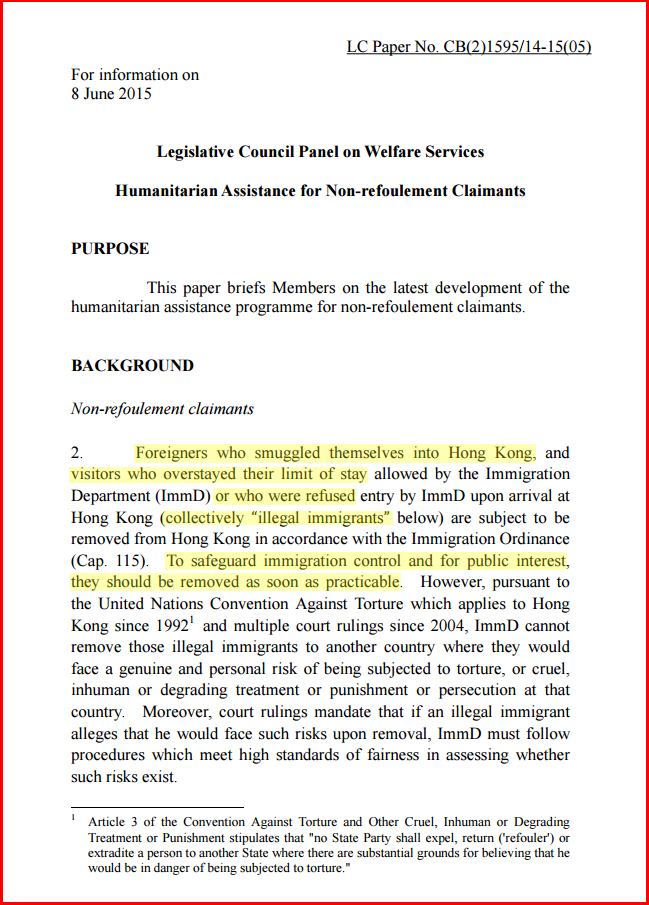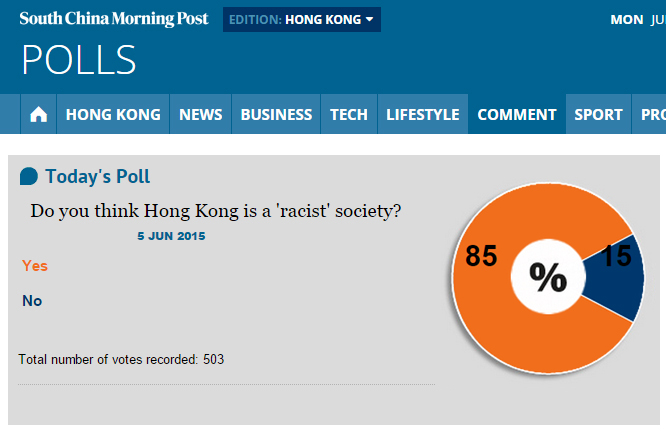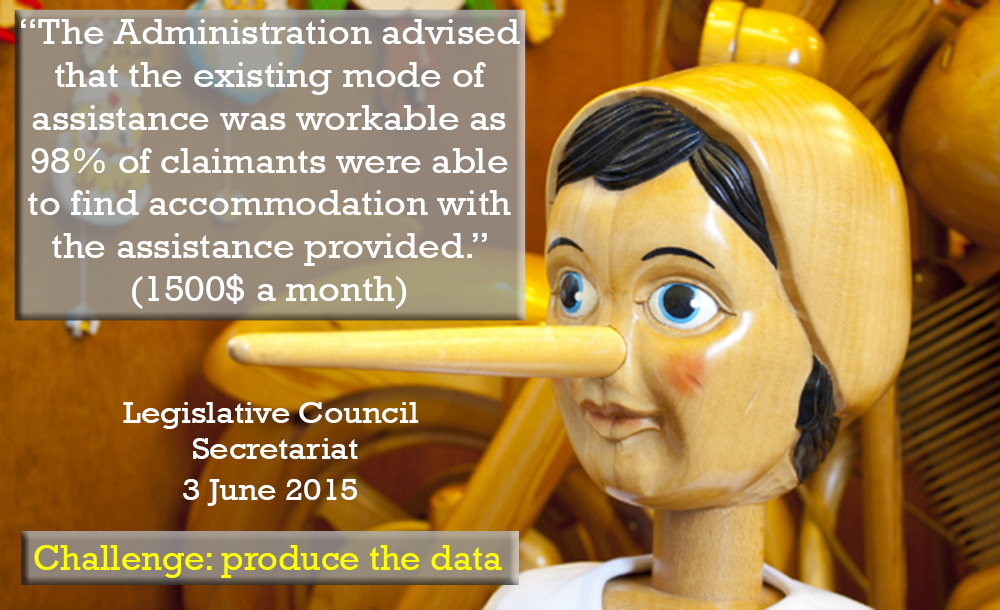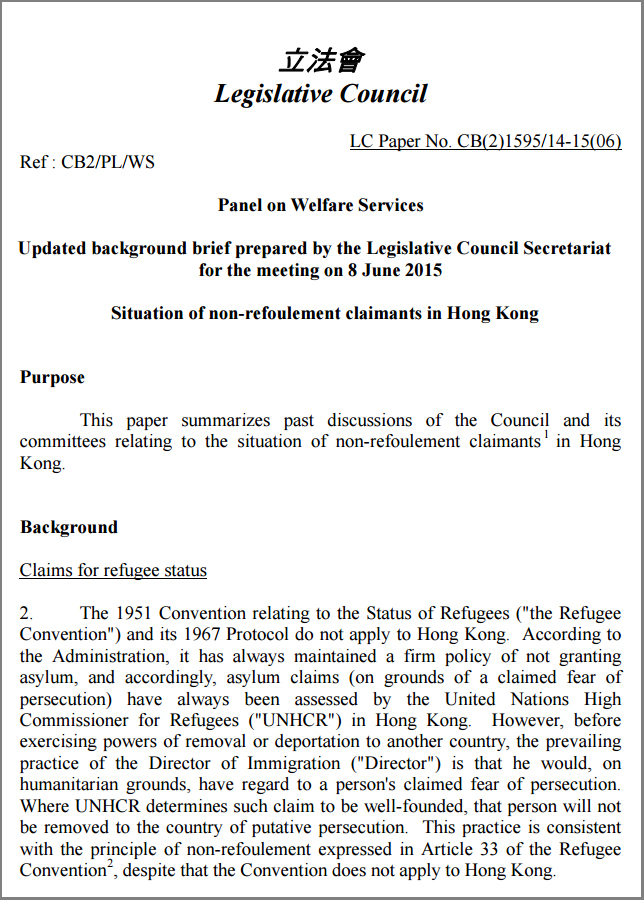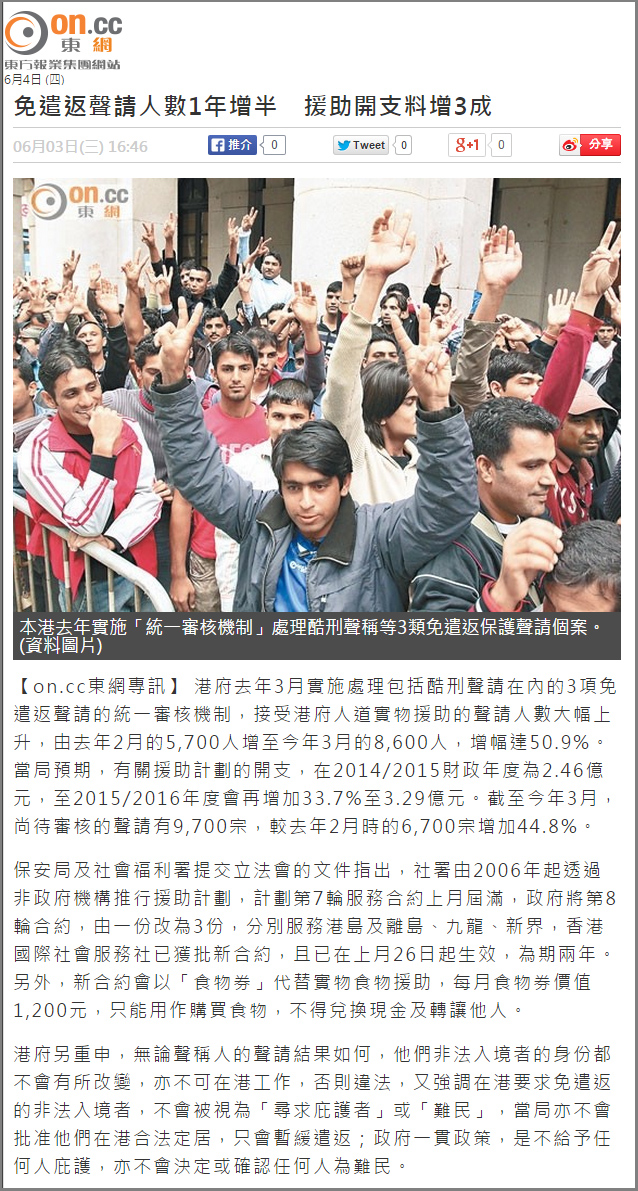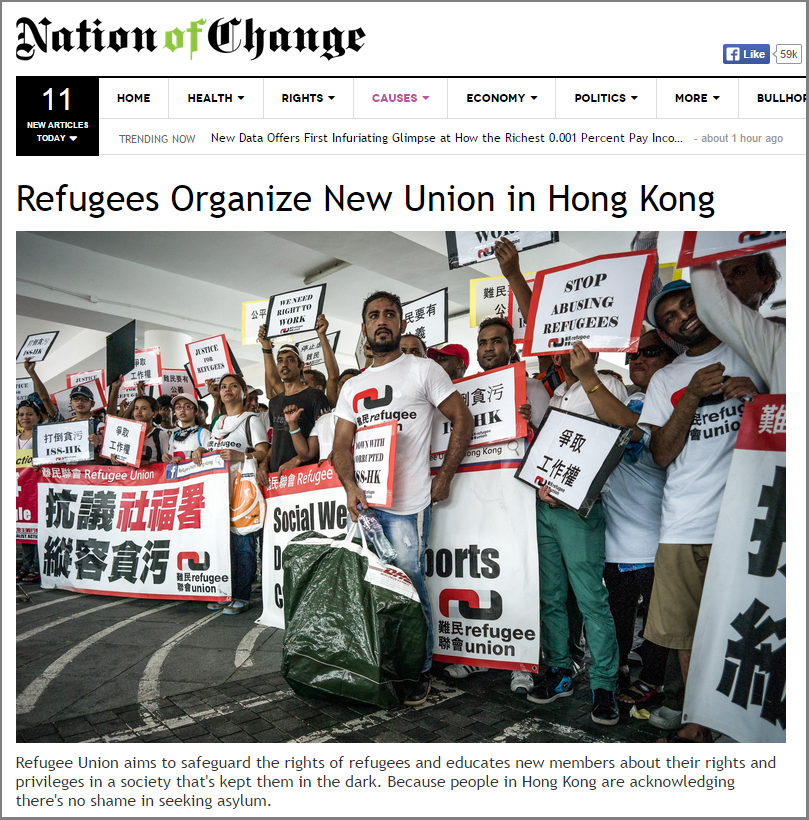Legco Panel on Welfare Services discusses assistance to refugees
Jun 9th, 2015 | Food, Government, Housing, Welfare | Comment
LC Paper No. CB(2)1595/14-15(07) – Update brief by the Security Bureau
LC Paper No. CB(2)1595/14-15(08) – Background brief by the LegCo Secretariat
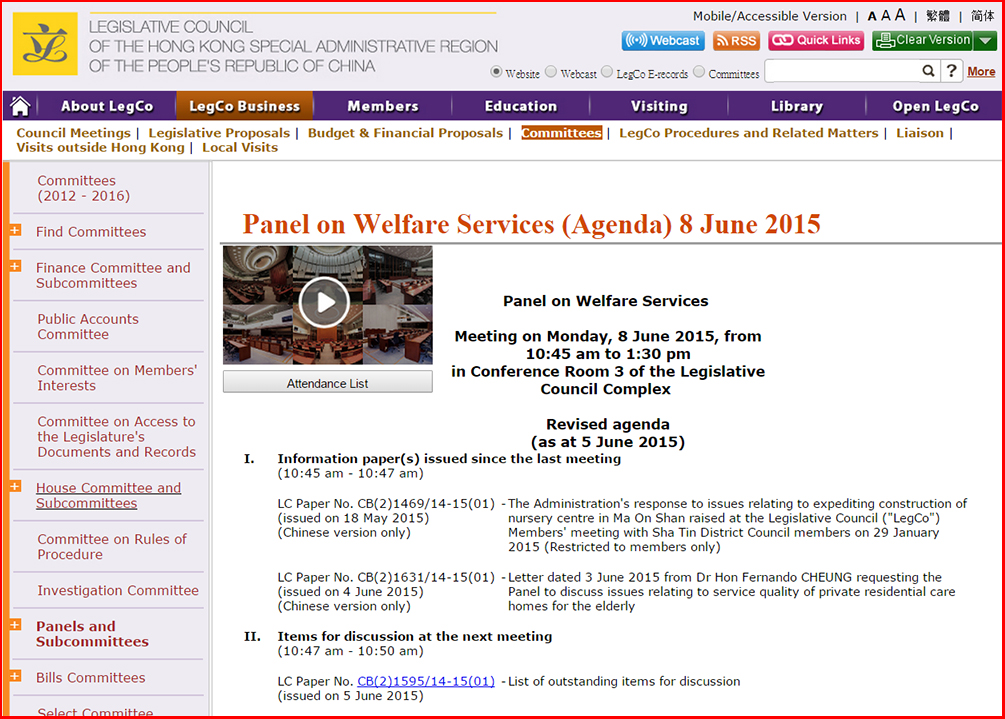
Security Bureau update on welfare to refugees branded illegal immigrants
Jun 8th, 2015 | Food, Government, Housing, Welfare | Comment
Does the war on welfare and refugees also target minors?
Jun 8th, 2015 | Advocacy | Comment
The asylum conundrum in Hong Kong is believed to be caused by individuals fleeing impoverished countries to seek greener pastures in Hong Kong. They are said to challenge border security and our government’s authority to undeservedly claim benefits that ought to be reserved for resident poor.
Although there might be individuals abusing the asylum system, who is responsible for the systemic failure to keep up with global challenges? There was recently great media uproar over a 12 year-old undocumented Chinese boy who was mercilessly hounded by xenophobic, localist groups into self-deportation – or what is euphemistically known to refugees as ‘voluntary departure’.
The pressure groups involved harassed the boy in a hateful witch-hunt as a warning to prospective migrants who might consider following in his footsteps. But hold that thought for a moment – doesn’t such bigotry conveniently overlook the 1.5 million Chinese migrants who fled to Hong Kong in past decades?
Protesters were quoted by the SCMP as saying, “We have to ‘kill one to warn 100’ who are abusing loopholes in the system.” But who is at fault for the existence of such loopholes? Are migrants to be blamed for leveraging limited resources and options, or should public opinion blame the architects of our flawed system?
The story of this undocumented boy resonates with another undocumented, unaccompanied minor recently encountered by Vision First. This gentle and soft-spoken youngster narrated a perilous odyssey through unfamiliar lands across Vietnam and China to Hong Kong. He was locked in a shipping container like livestock sent to the slaughter house.
His journey ended when his handler abandoned him, trusting and hopeful, in Sham Shui Po with the reassuring words, “Wait here that I go buy some food.” That was the last time he saw a familiar face. The person he had trusted with his life then vanished. Lonely in a teeming crowd, hungry before displays of abundance, he was homesick and desperate. “What will happen to me now?” he fearfully wondered.
Misha, not his real name, was eventually assisted by co-nationals who, similarly to him, found hardship and misery, not the protection and security they sought in our city. The 17 year-old boy struggled against an asylum and welfare system that regrettably failed to recognize his deep vulnerability.
For the past few months tried to receive assistance from the Social Welfare Department after his application for USM protection was lodged on 20 April 2015. Misha however was told by a SWD social worker that first his identity had to be confirmed with the Immigration Department, before he became eligible for assistance.
And yet Misha had already received his Immigration recognizance papers on 16 April 2015. If the SWD computers are not connected to Immigration’s database, then surely an urgent phone call should be made when a homeless minor calls for emergency assistance.
The fact is that almost two months later Misha remains de facto homeless. Vision First often encounter similar problems. The data of refugees who lodged applications for asylum is not promptly accessible by other departments for them to become eligible for assistance. Instead they are made to wait homeless and in desperate need of protection, despite some of them being minors or having children.
Vision First cannot but query who is responsible for such mistreatment of vulnerable refugees. Is it malpractice, indifference, or downright incompetence? Or is it a systematic, intentional form of low-level state violence perpetrated to appease xenophobic groups and perpetuate fears of an unsubstantiated floodgate scenario?
It is a black day for Hong Kong when the state flexes its muscle against children and minors.
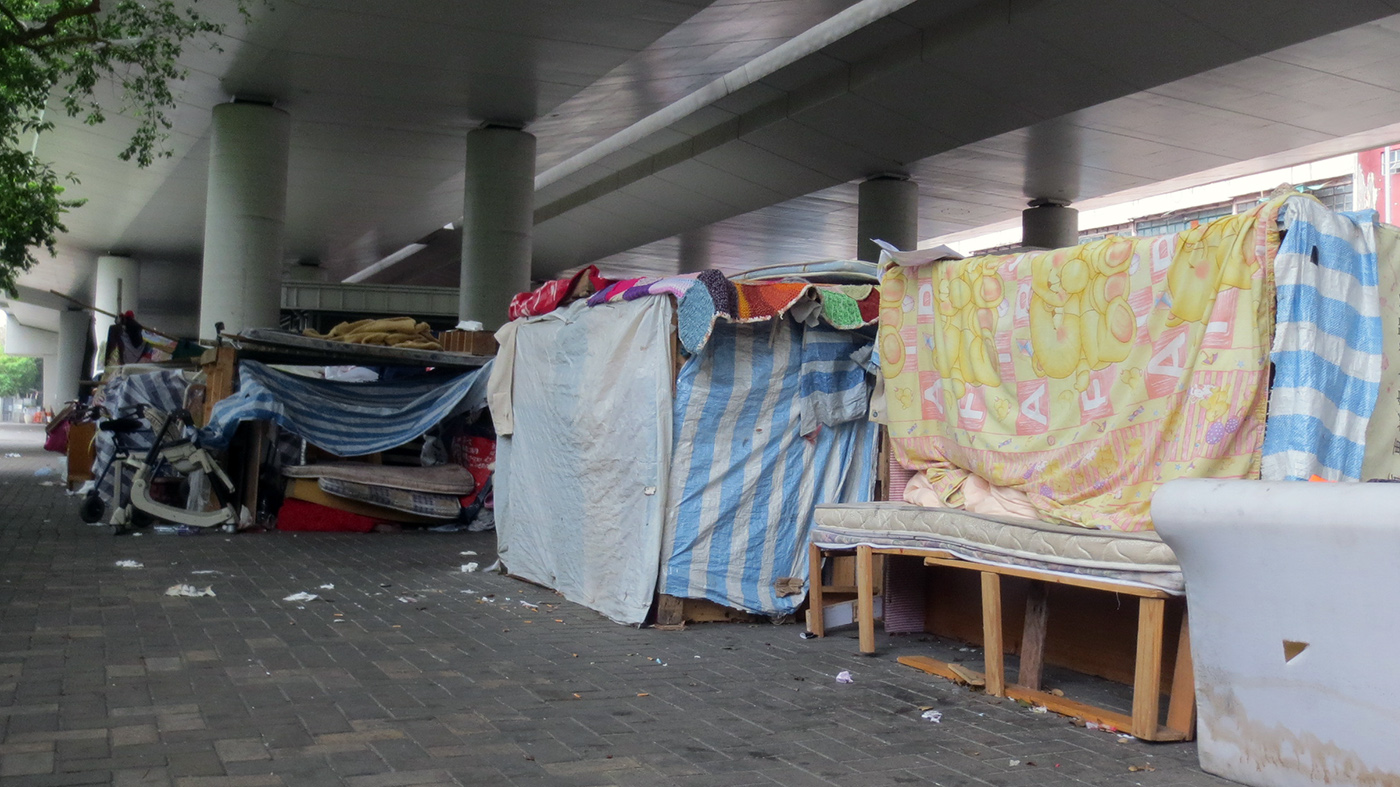
Government rent statistics disproved by Vision First data
Jun 5th, 2015 | Government, Housing, VF Opinion, Welfare | Comment
Vision First keeps records of rental amounts in Tenancy Agreements signed by refugees, as well as the rent assistance received to them by ISS-HK. Our data is collected at time of registration and generally updated during subsequent case work.
On 3 June 2015, the Legislative Council Secretariat submitted to the Panel on Welfare Services that, “The Administration advised that the existing mode of assistance was workable as 98% of claimants were able to find accommodation with the assistance provided.” In other words, the authorities imply that 98% of refugees secure accommodation with the assistance provided, that is seemingly inadequate for just 2%.
Technically the statement is correct, although it appears to be largely misleading. If the rent assistance were $100 per month, the statement would still not be false, because it glosses over the problem of rent balances refugees are forced to pay monthly without the right to work legally.
Vision First calls on the authorities to produce the data. The SWD has copies of the Tenancy Agreements entered between 8600 refugees (including children) and their respective landlords. Those are real rents paid in the open market, irrespective of the legality of dangerous slums and subdivided flats. The actual rent assistance received by each refugee is also known.
As way of example, we compiled a simple datase of the latest 100 Vision First registrations, out of a database of more than 2000 refugees. There are three data columns: “REAL RENT” paid by refugees to landlords; “ISS PAYS” to refugees in rent assistance; “NOTES” on individual housing arrangement. Without claiming to be representative of the wider situation, the table makes for interesting reading:
- Most of the refugees who pay $1500 rent, in line with the government allowance, live in slums, or illegal structures that are increasingly deemed unacceptable by case workers at contract expiry. When all the slums are closed down, where will refugee tenants relocate to?;
- Cohabitation is widespread with the growing risk of defaulting on leases when friends fail to get along, move out, are removed or deported, or voluntarily leave the city. It should be noted that security deposits are only paid once in the lifetime of a refugee in HK. How much money will HKSAR lose in security deposits through this policy?;
- Most refugees are faced with rent balances that must be met personally. The options are: a) assistance from NGO or churches; b) remittances from overseas; c) donation from well-wishers; d) assistance from working girlfriends; e) WORKING ILLEGALLY. Our readers may guess which arrangement is most prevalent;
- The data presented raises the following question: If ‘the existing mode of assistance is workable’, who is it workable for?
Sample dataset from recent Vision First registrations
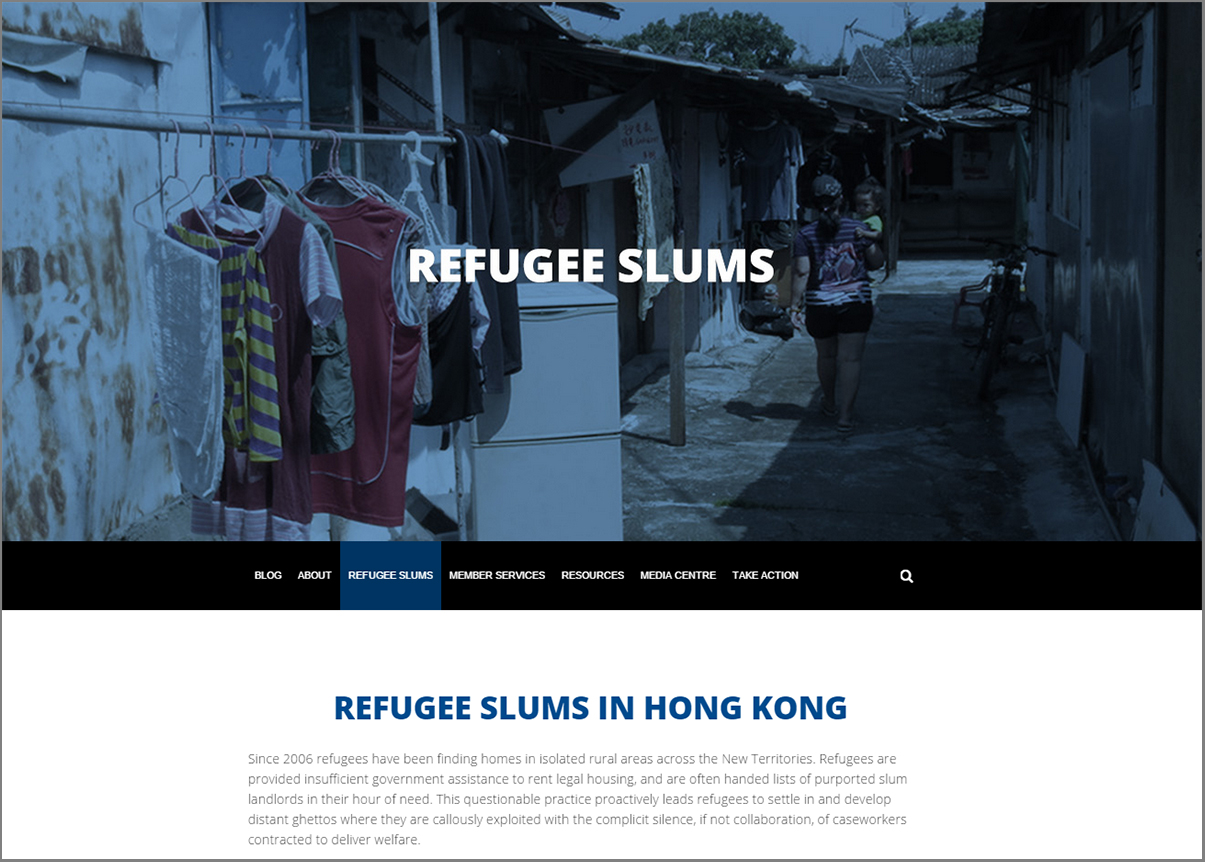
Situation of non-refoulement claimants in Hong Kong
Jun 5th, 2015 | Food, Government, Housing, Welfare | Comment
Liberty secured for detained refugee after harrowing treatment in CIC
Jun 4th, 2015 | Crime, Detention, Immigration, Legal, Rejection | Comment
Freedom and justice were almost denied Mr. Q, a South Asian refugee who sought the protection of Hong Kong Government on 23 December 2014, only to be detained and subjected to robust rejection and removal action until his release from Castle Peak Bay Immigration Centre (CIC) on 3 June 2015.
What suffering does a persecuted refugee endure in 162 days and nights of Immigration detention? For good reasons unlawful detention is compensated by Hong Kong law with HK$1,000 per day, as the rule of law takes the depravation of anyone’s liberty most seriously. Facts lead us to believe that this might not always be the case behind the secretive walls of Immigration detention.
The legal team of Barrister Robert Tibbo and solicitor Chris Lucas finally secured Mr. Q’s release after filing a leave application for Judicial Review at the High Court. Upon the application being filed, the Director of Immigration, K.K. Chan made the decision not to deport the refugee and a few days later exercised his discretion to release him from CIC. The process however was less than smooth.
The Director of Immigration had previously attempted to deport Mr. Q from Hong Kong, the last attempt being made on 1 June 2015. On that day, the legal team acted with great determination and urgency to file the leave application for Judicial Review in the High Court before the 4pm deadline, thus stopping the Director from deporting their client.
It should be noted that on 1 June 2015, the Director of Immigration, K.K. Chan was fully aware that the legal team had already applied for Legal Aid, was about to file a Judicial Review and had applied for and successfully obtained an Anonymity Order from a High Court judge. Despite all of the above, the Director took every possible step to attempt to deport the refugee prior to the 4pm deadline.
Mr. Q’s account of his treatment by Immigration officers inside CIC and at the airport is disturbing.
The refugee reports, “Immigration officers pressured me to leave. Some day after I met [Barrister Robert Tibbo and solicitor Chris Lucas] they took me to the airport. An officer threatened, ‘If you refuse to go back we will tie you to a chair, put a helmet on your head and drag you to the airplane.’ They pushed me around. They shouted, ‘Don’t give us trouble! Don’t make any noise, or something will happen to you. If you make trouble we can do anything to you!’”
Mr. Q was shaken by one experience in particular, “One day around 3:45pm, Immigration officers brought me down from 7th floor to the ground floor at CIC. They took me inside a female changing room. They threatened and scared me. They yelled, ‘Don’t make any trouble! Just go back to your country quietly. Just do what we tell you to do! Don’t ask any questions! Don’t argue with us!’”
He recalls, “There were four officers and they all shouted very loudly at me. They shouted, ‘If necessary we will use all our power to send you back!’ Even when my pants were slipping down from my waist, they didn’t care. They didn’t even let me pull them up. They kept pushing me from behind, telling me to walk faster. They brought me to the female changing room because there are no video cameras there.”
Vision First has no reason to believe that Mr. Q is lying, although readers may judge for themselves. Lastly, alert readers might wonder how such harrowing treatment by Immigration officers meets the high standard of fairness demanded by Hong Kong law in the processing and determination of asylum claims.
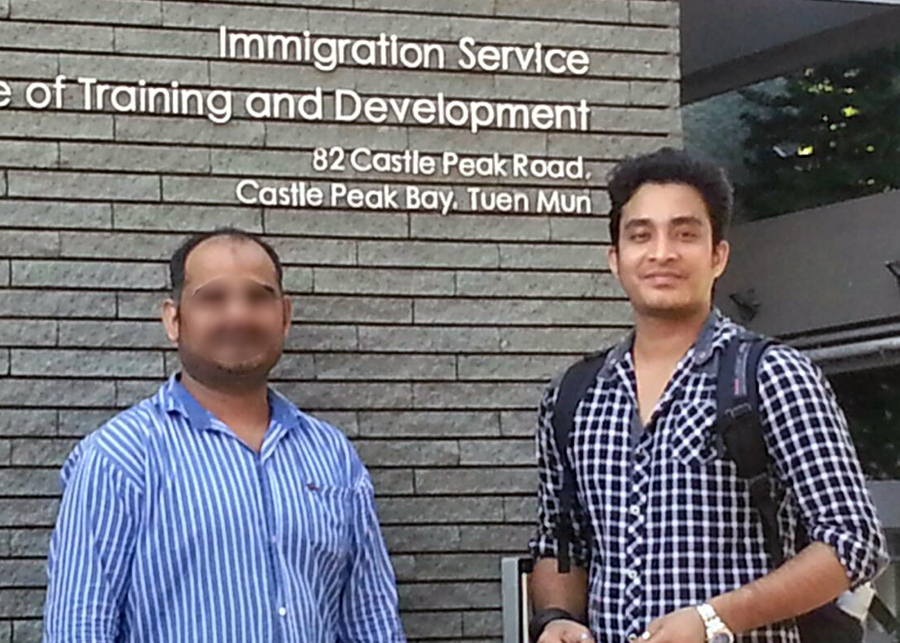
Nation of Change (USA): Refugees Organize New Union in Hong Kong
Jun 4th, 2015 | Advocacy, Media, Refugee Community, Welfare | Comment


